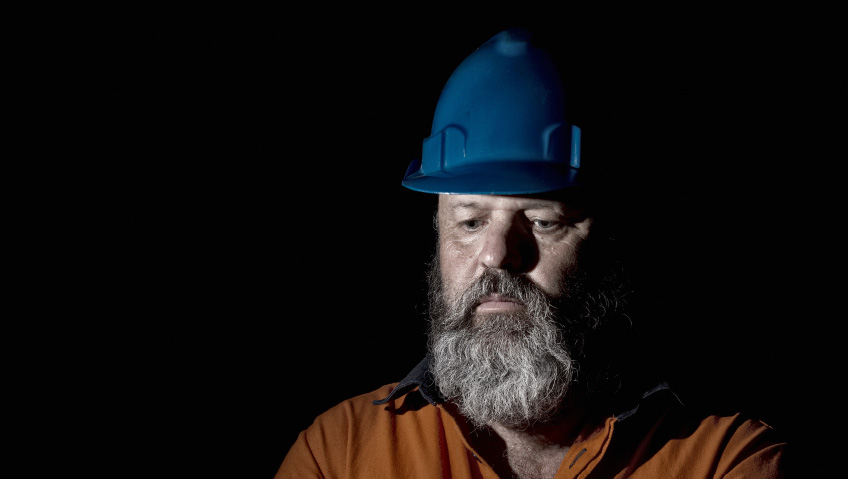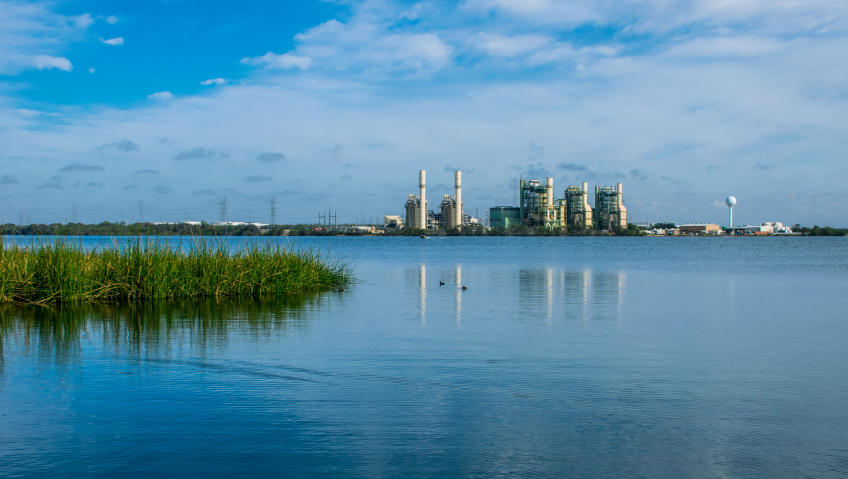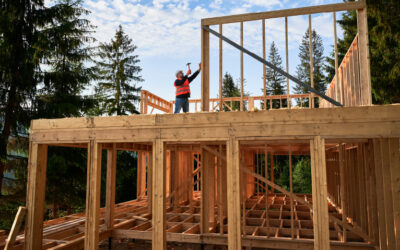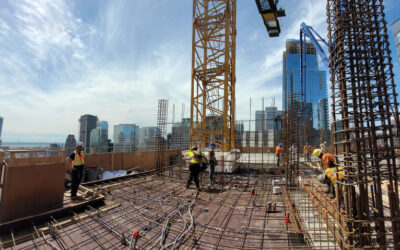Increasingly, the construction industry is embracing total human health, focusing on mind, body, and spirit when addressing wellness—but it hasn’t always been this way.
“Safety is our number one concern; we want everyone to go home in the same condition in which they arrived; safety is a way of life here.” These sentiments are frequently shared by construction industry leaders, and there’s no doubting their sincerity: they back up their words with robust safety programs and strict protocols for reviewing safety procedures at the start of each day, all successful measures in preventing injury. But physical safety, while critical to any construction project, cannot be the only component of a company’s wellness strategy.
A high-risk industry
By overlooking mental health concerns such as depression, work-related stress, and anxiety, the industry has sidestepped what may be one of the reasons it has difficulty attracting and retaining skilled trades. These issues may also explain why workers are not always as productive as their managers would like, as they strive to complete projects on budget and on time while white knuckling their way through.
Most troubling, issues of “mental” wellness may explain why suicide rates within construction rank so high against comparable occupations.
According to the Centers for Disease Control and Prevention (CDC), the construction industry, which for statistical purposes includes oil and gas and mining extraction industries, has the second highest rate of suicide in the U.S. at 53.3 per 100,000 workers, second only to the agriculture, forestry, and fisheries sector. Notably, these industries share some similarities, in that the workforces of all are male-dominated and the work is physically demanding and often performed in isolation.
To put it in context, the suicide rate for construction workers is over four times higher than the national suicide average and five times higher than all construction deaths combined, a clear indication that, although physical safety programs are working, the industry is plagued by serious mental health issues.
The reasons for these statistics are complex. First, there’s the nature of the work: high-risk, demanding, deadline-driven, and sometimes isolating—frequently in remote locations, away from family and friend networks.
Then there’s the composition of the workforce, which is still dominated by men, who statistically have always faced a higher risk for suicide than women. Data released by the CDC in 2015 indicates that, within the industry, male suicide rates (49.4 per 100,000 workers) are twice as high as female suicide rates (25.5 per 100,000 workers). Both rates are alarmingly high.
Higher male suicide rates in the general population have long been attributed in part to a culture which reinforces and rewards stoicism and strength in young males and admonishes that “boys don’t cry” while equating seeking help for emotional issues with a sign of weakness. Those ideas may be even more prevalent in the construction industry, where being “a tough guy who can handle it,” is the perceived norm and where women, to be accepted, have to fit into that culture.
Exacerbating the problem is that a percentage of the workforce is composed of armed forces veterans who may have untreated PTSD. Another issue is that a percentage of workers, perhaps after suffering work-related injuries, are dependent on pain-relieving medications, resulting in substance abuse and its consequences.
Added to those concerns is the organization of the industry itself, which is split between salaried, full-time office employees and hourly field employees who are often affiliated with labour unions. This can create a disconnect when the industry attempts to effect change across the culture and move toward one that is concerned about the totality of its workers’ health from a holistic viewpoint.
Totality of health
Of course, this is something that other industries—the financial, retail, and manufacturing sectors for example—have been doing since the 1980s when the wellness movement first gained traction.
Apart from being the right thing to do from an ethical standpoint, caring for employees’ health and well-being also makes sound economic sense as these industries have discovered for themselves, evidenced in numerous reports and studies which reveal a positive correlation between employee well-being, employee productivity, and company performance.
The Construction Financial Management Association (CFMA) took a leadership position on these issues as early as 2014, publishing “Mental Illness and Suicide: Break the Silence & Create a Caring Culture,” which explored topics of mental health awareness, opioid and addiction recovery, and suicide prevention. Other professional organizations have since followed CFMA’s lead, while CFMA continues to address these topics.
In an Oct 2020 article, “Mental Health & Well-being in the Construction Workplace” in CFMA Building Profits Magazine, Cal Beyer argues that “a contractor’s most important resource, and one of its leading costs, is its employees. By actively investing in employee, supervisory, and leadership development programs, CFMs can expect a positive ROI and other measurable outcomes in both their risk management and human capital investments. This intentional strategy combines organizational development practices to leverage human capital risk management and protect a company’s bottom line.”
It appears, however, that company managers, labour unions, and even trade training programs have been slow to catch up. In 2021, the American Psychiatric Association (APA) Foundation’s Center for Workplace Mental Health conducted a 20-question survey on mental health in the construction industry and reported data from 1,175 respondents across the U.S. It concluded that “the results suggest that concern for mental health is high, but willingness to discuss mental health at work is low.”
Some key findings were that 93 percent of all survey respondents (presidents, CEOs, and owners) recognize that addressing mental health is a sound business practice, with 77 percent saying it was prioritized at work. However, when asked if workers were likely to access mental health care, only 26 percent indicated they believed workers would, whereas nearly half did not know and nearly a third said workers were unlikely to do so.
The same low numbers apply to whether workers would discuss issues with supervisors or colleagues, with only 17 percent saying they would discuss them with a supervisor and 18 percent with a colleague. This is in sharp contrast to a similar public poll conducted by APA the same year, which indicated that nearly 56 percent of workers in other sectors would be comfortable discussing mental health issues with their supervisors or colleagues.
The report also offers the top four reasons why construction industry workers, according to those polled, were reticent about seeking help: shame and stigma (78 percent); fear of judgement by peers (77 percent); fear of negative consequences (55 percent); and not knowing how or where to access care (46 percent).
The report concludes: “As the construction industry works to improve health and safety, including mental health and well-being, this report sheds light on important areas to focus on to overcome challenges in the workforce.”
Developing a framework
The report suggests a framework for wellness begins when an organization “institutes a collective mindset for well-being as part of a respectful workplace committed to equity and social justice, which accepts mental health as a diversity and inclusion opportunity.”
It’s vitally important, they say, for senior leadership to communicate with empathy and “build a caring culture that embraces well-being by incorporating mental health awareness, substance use and addiction recovery, and suicide prevention into safety, health, wellness, employee benefits, and employee / employer relations.”
But how do leaders make this paradigm shift, even as they recognize the importance of doing so, when they themselves are a product of a culture that for too long has ignored the mind / body / spirit connection? For many whose intentions are good, it is still a foreign concept.
On March 30, 2022, however, the Associated Builders and Contractors (ABC) took a bold step toward normalizing the concept of a “caring culture that embraces wellness” when it announced a collaborative partnership with the American Foundation for Suicide Prevention (AFSP) that will provide company leaders with the tools to take on this job throughout the U.S. construction industry.
The partnership will draw on the AFSP’s expertise to develop and disseminate educational resources on mental health and suicide prevention in workplaces so that company leadership will understand what needs to be done, and so that the 46 percent of the workforce who said they did not know how to access information will now be able to do so.
The team will also participate in key events where worker safety and health, and the development of safety and health practitioners, is addressed; provide practitioners with relevant information; and share opportunities about supportive programs and events with the ABC’s 69 chapters and AFSP chapters in every state.
“Safety includes total human health—emotional, mental, intellectual, occupational, and spiritual wellness—and we must continue to raise the bar for safety in the construction workforce of more than 7.5 million,” said Greg Sizemore, ABC Vice President of Health, Safety, Environment, and Workforce Development, as shared in a news release.
“Our people are our greatest assets, and this partnership will take our total human health and safety practices to the next level. Going forward, this is the greatest opportunity to leverage and advance world-class safety for our people, both physically and mentally,” said Sizemore.
A global issue
This is far from being only an American issue. It is recognized globally, with the construction industries in Canada and Australia, for example, addressing it through programs such as LivingWorks and MATES.
Based in Calgary and started in 1983, LivingWorks offers two suicide prevention programs, LivingWorks ASIST and safeTalk, which use a “train the trainer” model for dissemination. In Australia, MATES, which is modelled on LivingWorks, aims to raise awareness around the topic and over the past 10 years has gained acceptance by a number of large companies who are asking to have their sites MATES-accredited.
Excellent as these and other programs are, real change will only come with a cultural paradigm shift in the construction industry and the development of a holistic view of wellness.
Ironically, that same industry is leading the way in reshaping the built environment, creating buildings that are net zero carbon and that provide the very workplaces focused on wellness for employees in other fields—financial, health, education, and retail, among others. It’s time to turn that same energy inward and provide construction industry workers with the level of attention and care they need and deserve.













